Mother of Pearl Color, Natural Versus Enhanced.
Mother of Pearl iridescent color variants fascinate most... whether you are an artist, interior decorator, spiritual cleansing believer or craft designer, the visual attraction is hard to resist.
Add to this a powerful trend to move away from plastics, and we have 2 of the main reasons for ever growing interest in shell surfaces, inlay veneer sheets, whole mother of pearl shells as soft furnishing, and shell pieces for arts and terrazzo style creations.
Today, let's look at mother of pearl color provided by nature, versus enhancements by added tints, some quite subtle and others less!
The Power of Unpredictable Iridescence
No two shells are the same. For each specimen in the very same species, sometimes found latching on the same rock, you will find very distinct, elusive rainbow-like reflections. These can be found inside the natural raw shell from the beach.
When the outside of the shell, known as the rough side or skin, is carefully polished, more iridescence is exposed, and can be enhanced by waxing (Buffed shells) or by a clear gloss coating.
Most unbelievable is the depth of variations that remain in a 0.1 millimeter "feather" sliced from the shell! This is how shell veneer sheets can boast a 3 dimensional display of all the colors in a shell species, yet they are only 0.25 millimeters thick. Fashion Jewelers take full advantage of thin veneer sheets with the 3D effect, without having to cut, shape and polish a piece directly from a Mother of Pearl shell.
Here are the main Mother of Pearl Species chosen for their natural color, our pictures show:
1. Iridescence in the raw shell, unpolished, mostly on the inside, where the mollusk inhabits the shell.
2. The enhancements obtained by polishing the outside of the shell, working through the roughness of lime, silt and "Skin"
3. The richness of color captured in Mother of Pearl veneer sheets: using several shells for one sheet means many unique reflections.
White Mother of Pearl (Pinctada Maxima)
1.The Raw Shell:
Depending on each shell, color varies from pure shiny white to subtle pinks and light blues, only visible with certain light intensity and angles. Luxury watch dial makers in Switzerland look for the pure whites as a real distinction. The "Pearl" look, a very specific wavy appearance in the structure, can be a bonus...or sometimes a reason for reject!

2.The Polished White Mother of Pearl.
Once again, nacre enthusiasts and professionals can be looking for different things. Here we have tinted nuances in reflections brought out by polishing. In turn these variations can be celebrated in the coated veneer sheets.
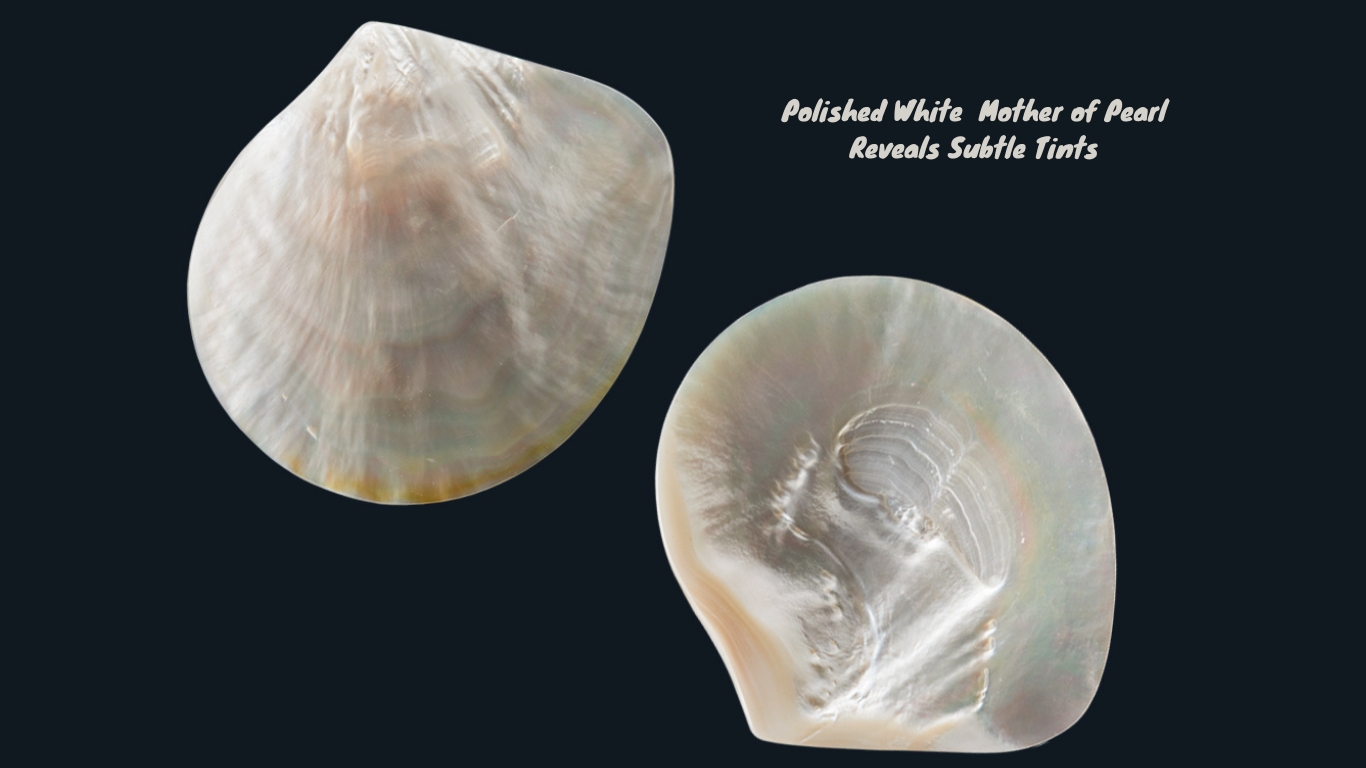
Alternative locations in the Pacific, including Indonesia, Fiji, and Papua New Guinea often have white MOP with golden reflections. Those shells can still be classified as top grade when they have a large percentage of pure white.
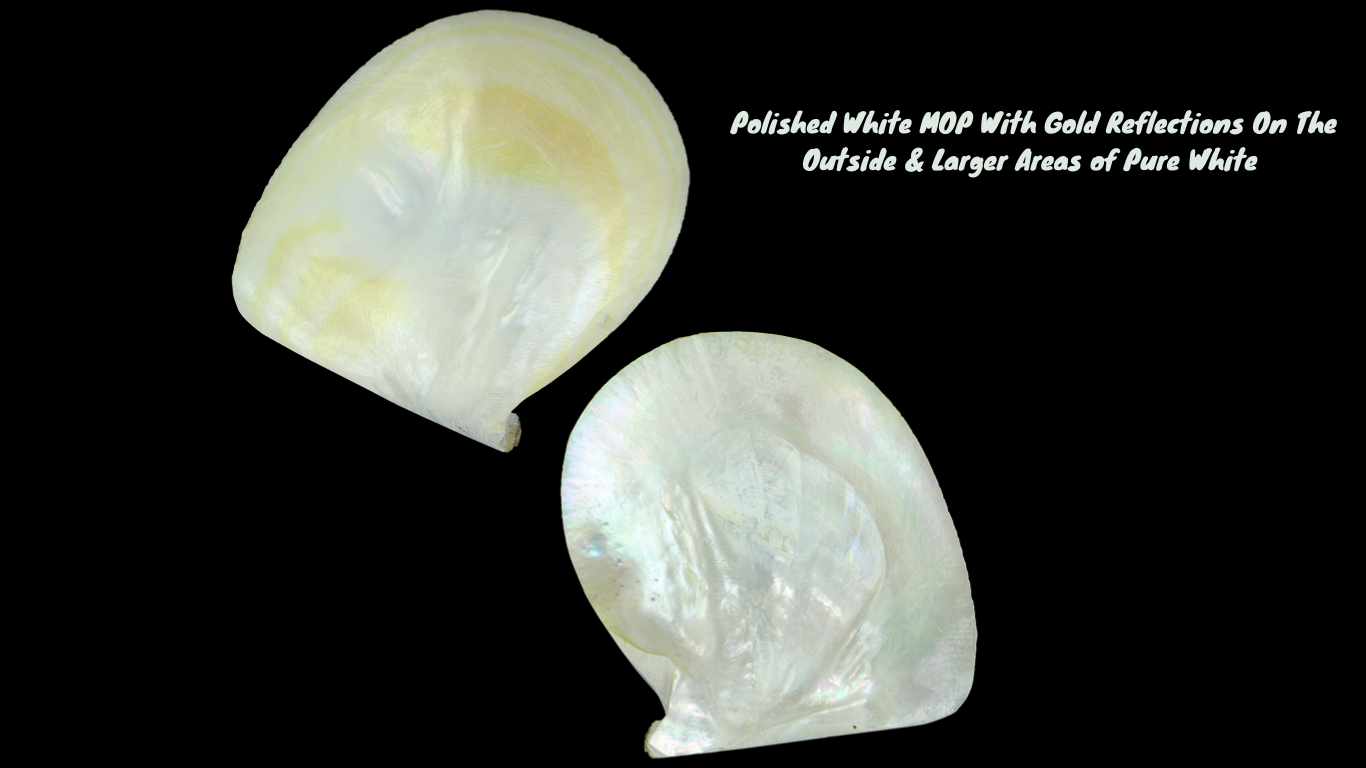
Gold White Mother of Pearl: As a sub-species of White MOP "Pinctada Maxima", this shell is highly appreciated for its pure golds fading into pure whites. It is found in a number of Pacific destinations, including the Solomon Islands. Again, when polishing the "back side" of the shell, the distinct color will glow.
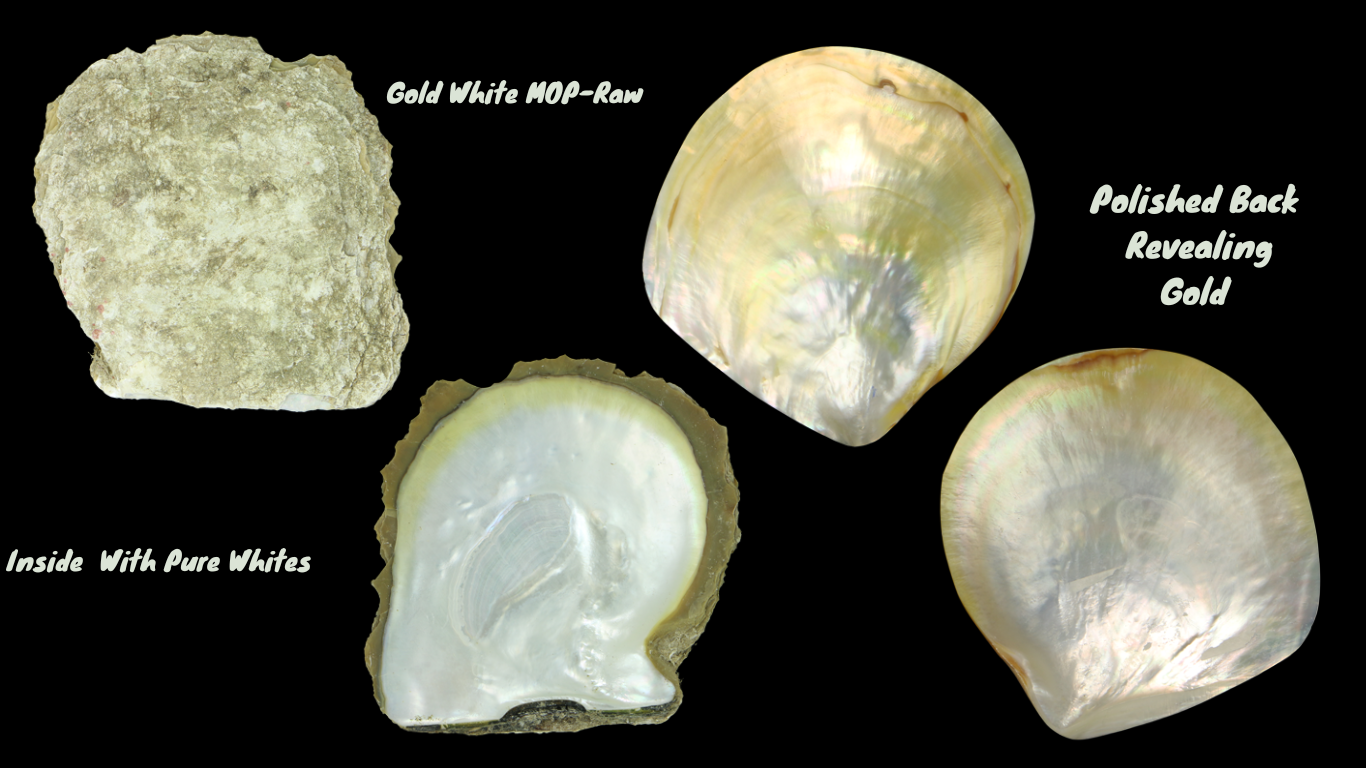
3. Veneer Sheets Celebrate The Natural White Mother of Pearl Color.
Expressing the beauty found in many unique White Mother of Pearl shells brought together on a flat surface. Let's compares various white Mother of pearl veneer colors. Freshwater Mother of Pearl, a freshwater mussel endemic to China , has comparable colors with a less luxurious look than Pinctada Maxima. It brings a nice price alternative for interior decorators using shell veneer on large surfaces.

Black Mother Of Pearl (Pinctada Margaritifera)
1. The Raw Shell
Often referred to as "Black Mother of Pearl" or "Black Lip Mother of Pearl", it was made famous by the raise of the French Polynesian Black Pearl Industry. Its point of difference is in the black strip bordering the inside lip of the shell. This sub-species has a large distribution around the world, including very distant regions, from the Persian Gulf and Red Sea to Soudan, Papua New Guinea & Australia to the Cook Islands and Tahiti, and even the Coasts of India and Japan.
Iridescent whites still represent a large part of the shell. Depending on the provenance, color and contrasts vary greatly, but in general, more pronounced black strip means higher value.
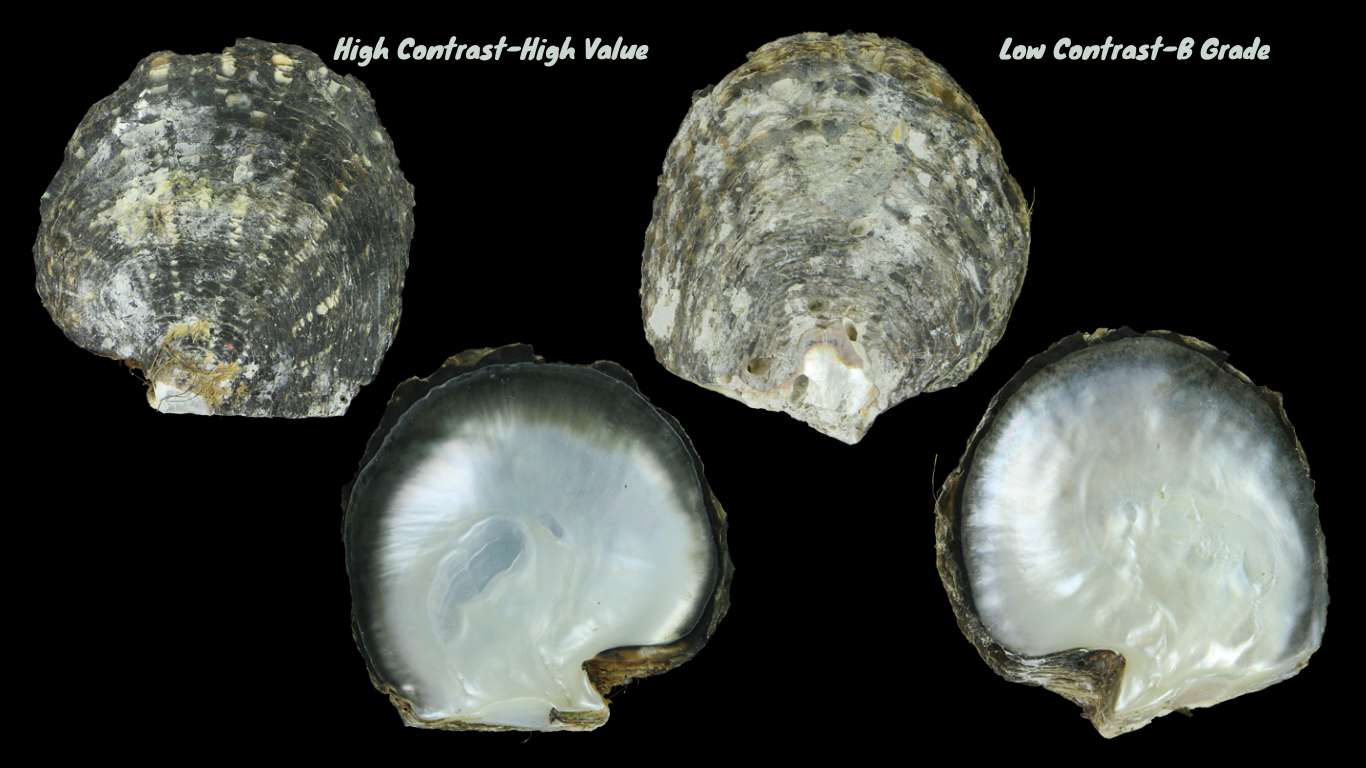
2. The Polished shell
With various habitats around the globe, it has various color dominants that are revealed by polishing the back of the shell. Better than pictures, video shows the difference between 2 regions: From French Polynesia, typically smaller shells harvested as a bi-product of pearl farming, are known for the "Peacock" colored reflections of a deep black, Changing light reveals hints of purples, pinks and greens. They are highly prized for jewelry and buttons for luxury clothing.
From Fiji- Sought after for the green/gold bows layered with unique black, brown and bronze colors, a select choice for fishing lure makers.
3. The veneers
Once again, captured in a gloss coated shell veneer sheet only 0.3mm thick are the shimmering 3 dimensional colors of the Black Mother of Pearl.
Natural Mosaic Veneer uses mainly the black strips in the Black lip Mother of Pearl, whereas the Moonstone Pattern uses both the natural whites and natural blacks and bronze of the shell.
Colorful Abalone Species
In a previous post called "Mother of Pearl Vs Abalone", we explain why Abalone, Green Snail and Pink Mussel all belong the larger the Mother of Pearl Family.
New Zealand Abalone (Paua) and Mexican Abalone are the most amazing contributors to the Mother of Pearl Color Palette, so they deserve a mention. The best of New Zealand Abalone Paua is found on the Southernmost Coasts, the Chatham Islands, and on Stewart Island, with turquoise blues, purples, vivid greens and more.
Naturally, those shells are a prime choice for fine jewelry, wood inlay crafts, interior decor and furniture.
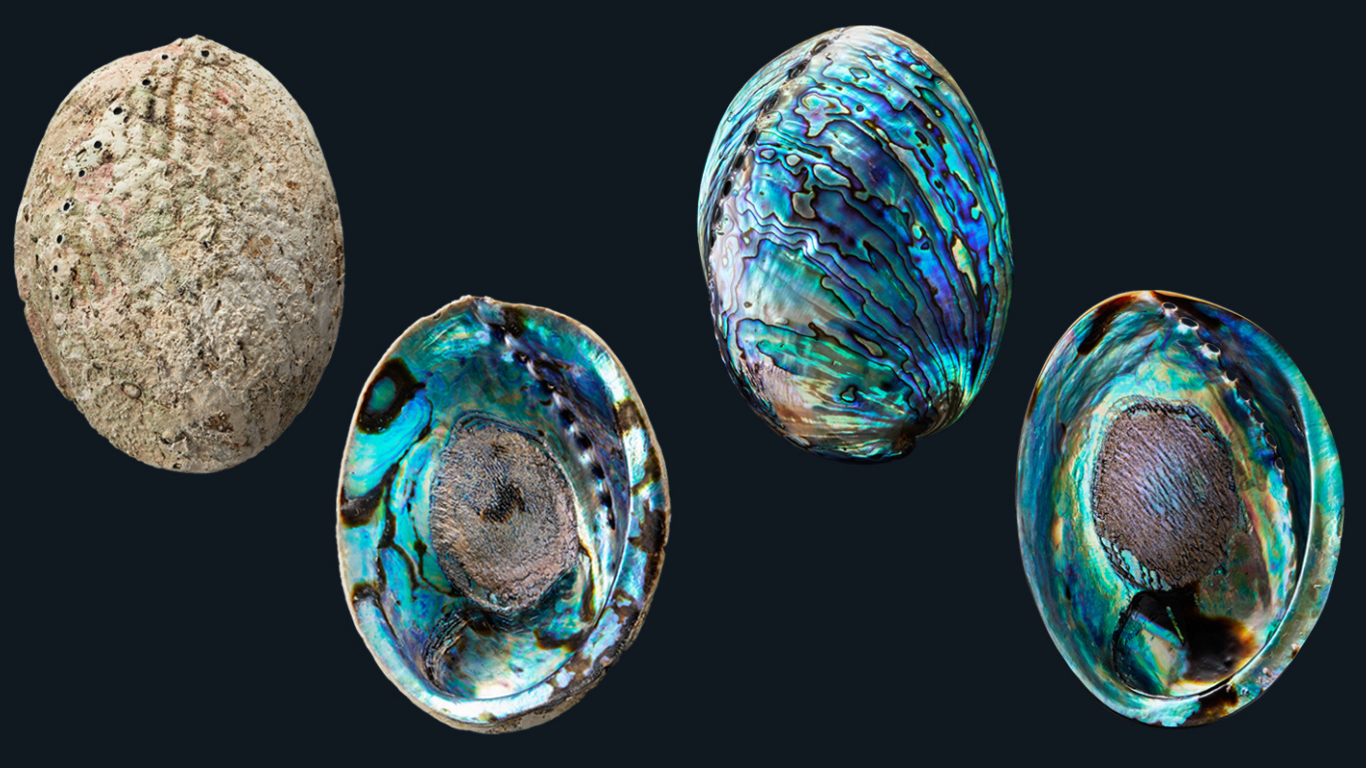
When Paua shells boast a dominance of pinks - sunset Paua- or greens - green Paua- they can be specifically chosen to suit a project with more subtle colors. As shown below, colors in the natural shell will dictate the dominant tint in the veneer sheets.
Mexican Abalone makes a great veneer sheet with more pastel colors, but nothing gets close to the vivid colors of the New Zealand Abalone. The colors and and rippled texture of the polished Mexican abalone are still present in the 0.3mm thick "Mexican Green Ripple" veneer. The turquoise blues, purples and greens are much more prominent in the NZ Abalone Paua veneer.
Also a Mother Of Pearl?
Yes they are!
The Green Snail also deserves mention for its iridescent whites, pinks and even light greens, Originally endemic across the Indo-Pacific region, in the Western Indian Ocean, In Southeast Asia including Thailand and the Philippines, it was even found near the Japanese and Western Australian coasts. Its was also successfully introduced in Vanuatu and spread to French Polynesia.
Green Snail is mainly used as a trophy seashell for soft furnishing, thanks to its impressive size: It can reach well over 250mm in diameter.
Freshwater Species Occupy a small space in the Mother of Pearl Family, We have mentioned the freshwater Mother of Pearl, with its white color. The Pink Mussel form the Mississippi, photo below, has long been a favorite in the traditional Indian Jewelry industry, for its unusual and unique bright pink color once polished.
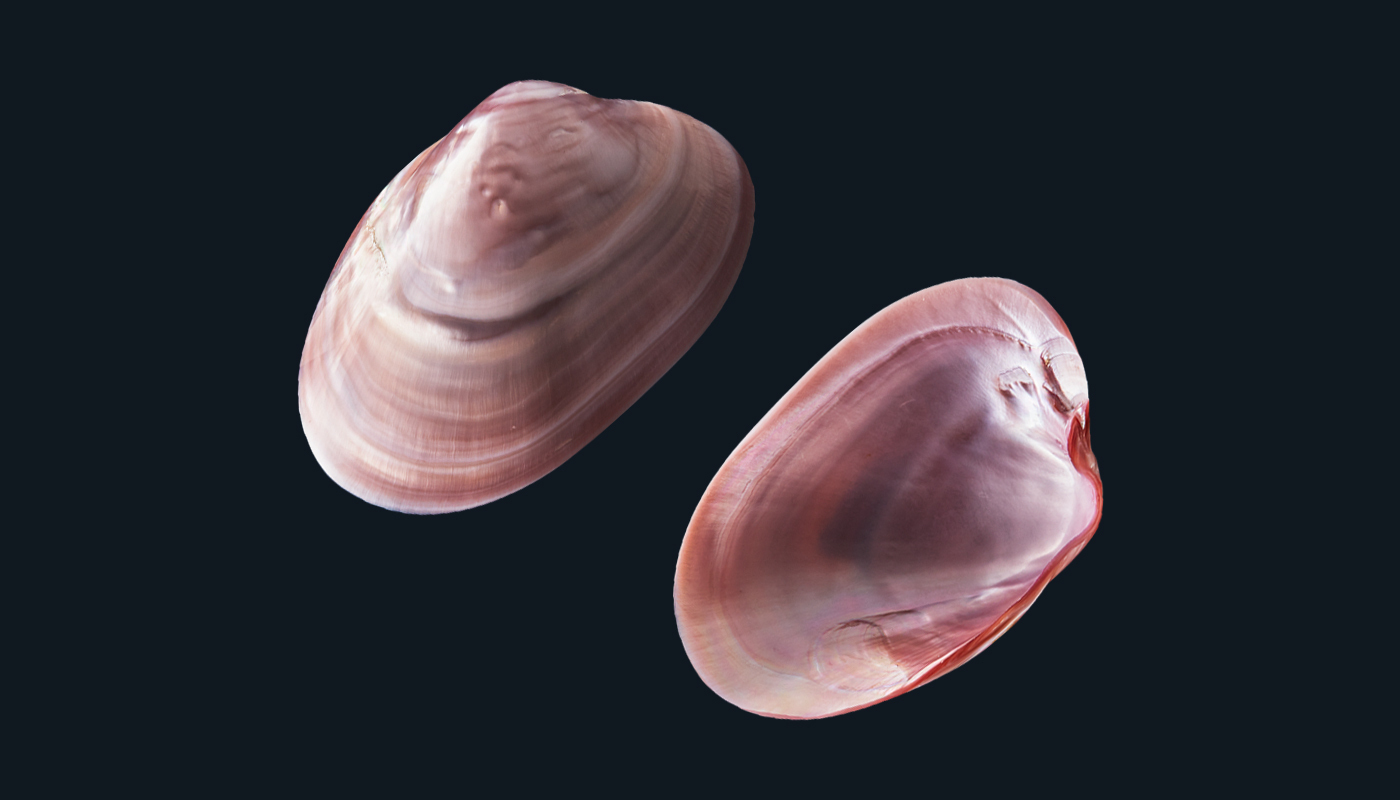
Added Color on Mother of Pearl Veneers:
Creative industries are known for their eagerness to bring up new collections, keep an edge in their competitive world, and foster their point of difference. For many, it is difficult to move away from the natural color, because the natural product was an ethical choice in the first place.
However, adding color to the gloss coating is essential to satisfy the thrive for variety. Luxury brands want to use ethically and sustainably harvested shells, but they will take advantage of tints to add character when it suits them.
Below are some of the more popular color tones used for New Zealand Abalone (Paua) and Australian White Mother of Pearl veneers, developed in the workshops of Oceanshell Ltd in collaboration with our clients.
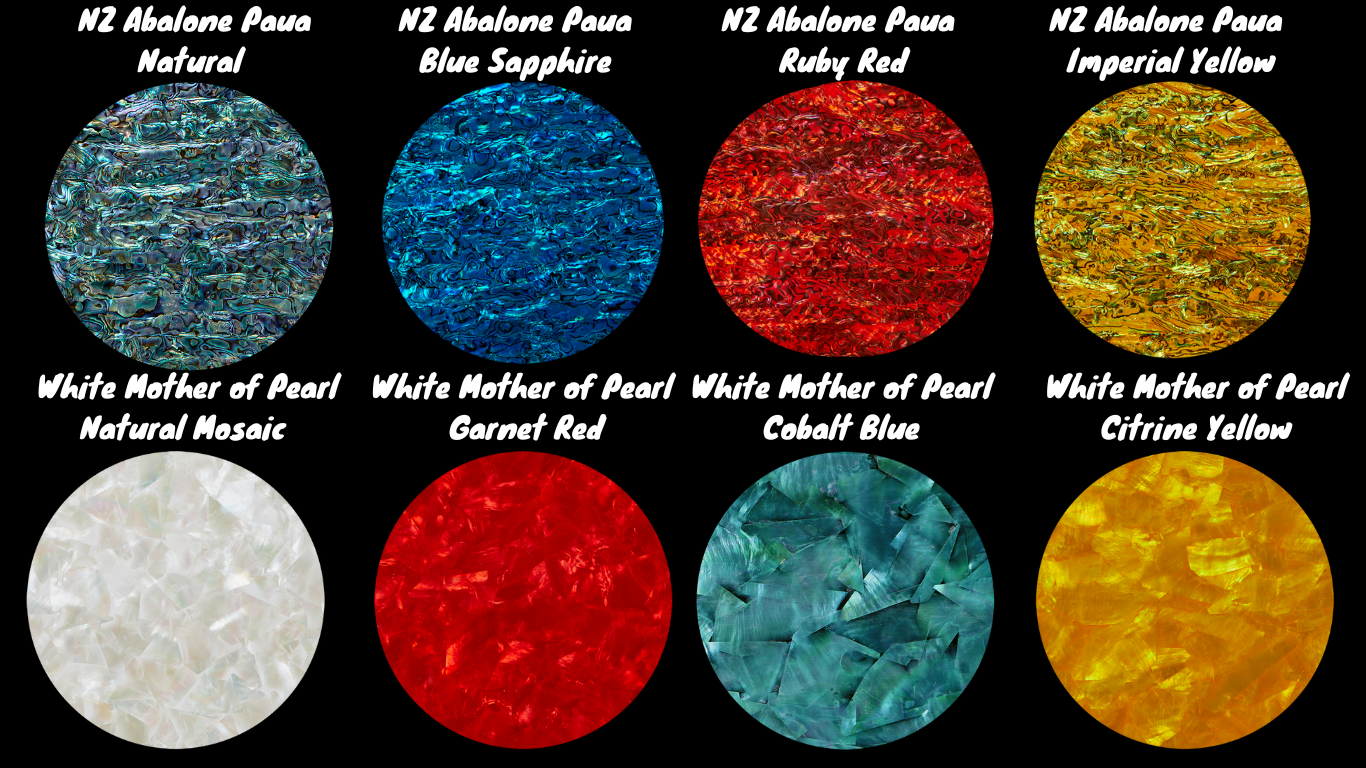
The Real experience of Mother of Pearl Color Comes With Changing Lights.
Photos can give you a nice feel for the added tint, but you only experience the fascinating range of color by exposing the shell, natural or tinted, to changing light.
Tell us about your project...
Your project is unique, so we provide personalised advice before delivering worldwide from our studio in New Zealand.
Luméa products are made from natural shell with a variety of factors that affect form and function. If you can’t find the right product from within our range, then talk to us about our custom design service. We love to experiment and collaborate with our partners to create unique solutions.